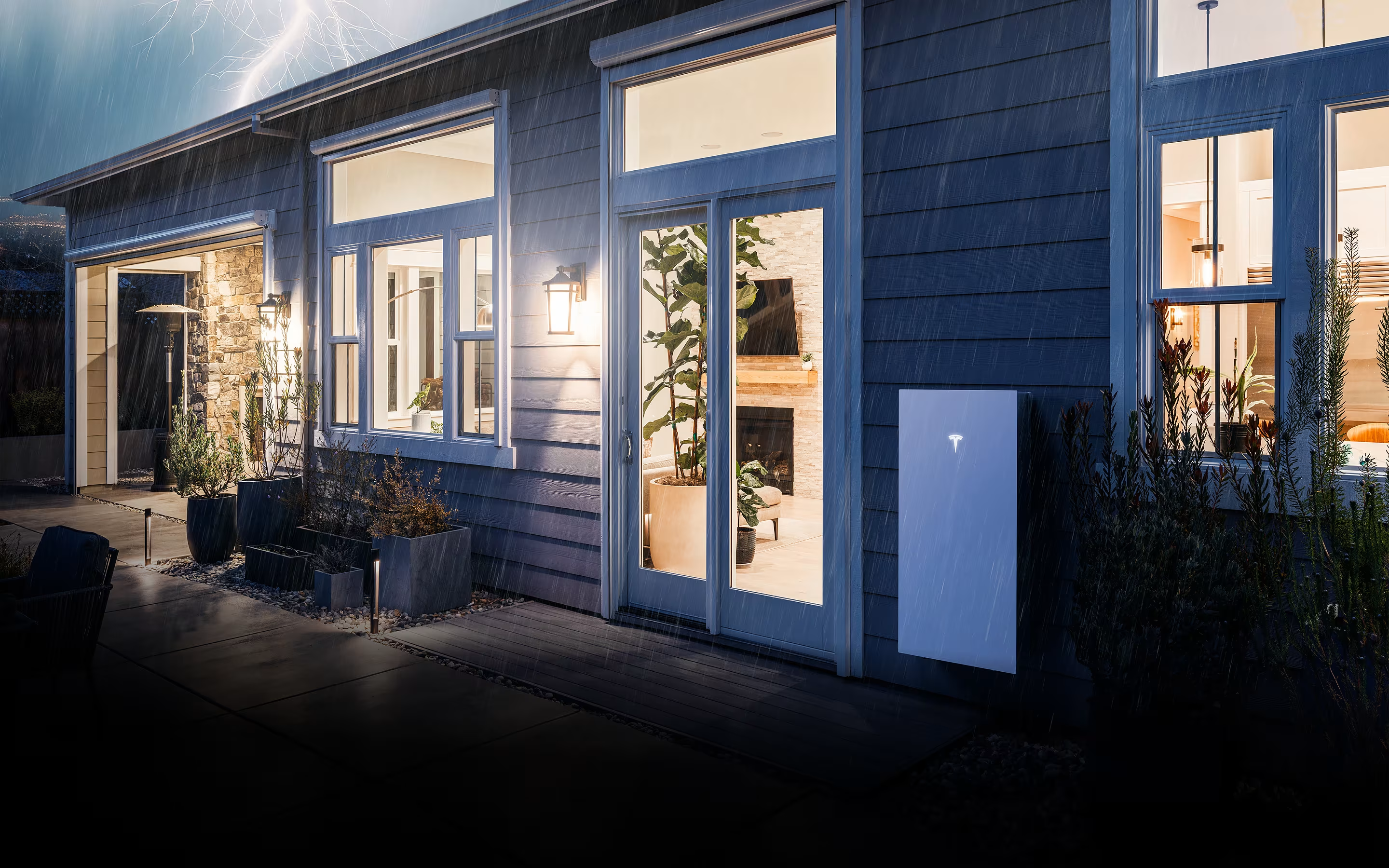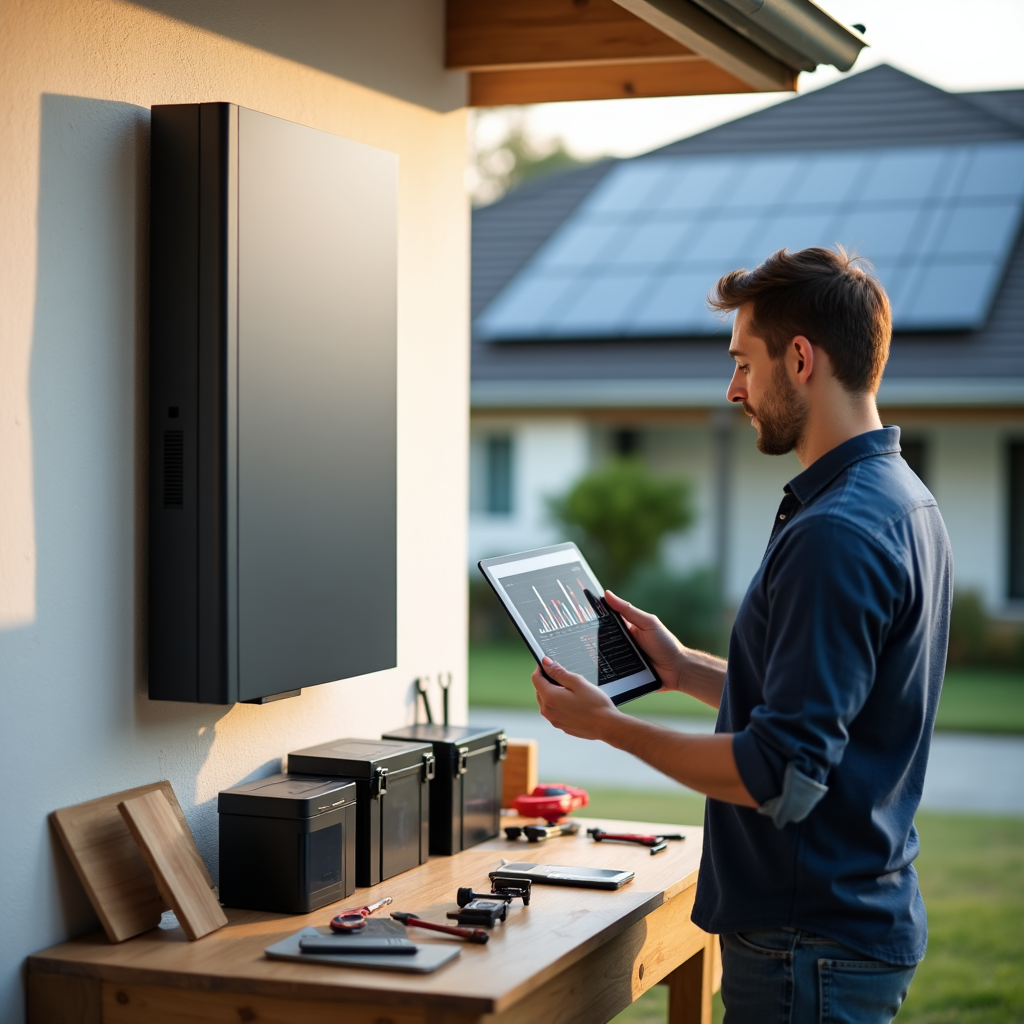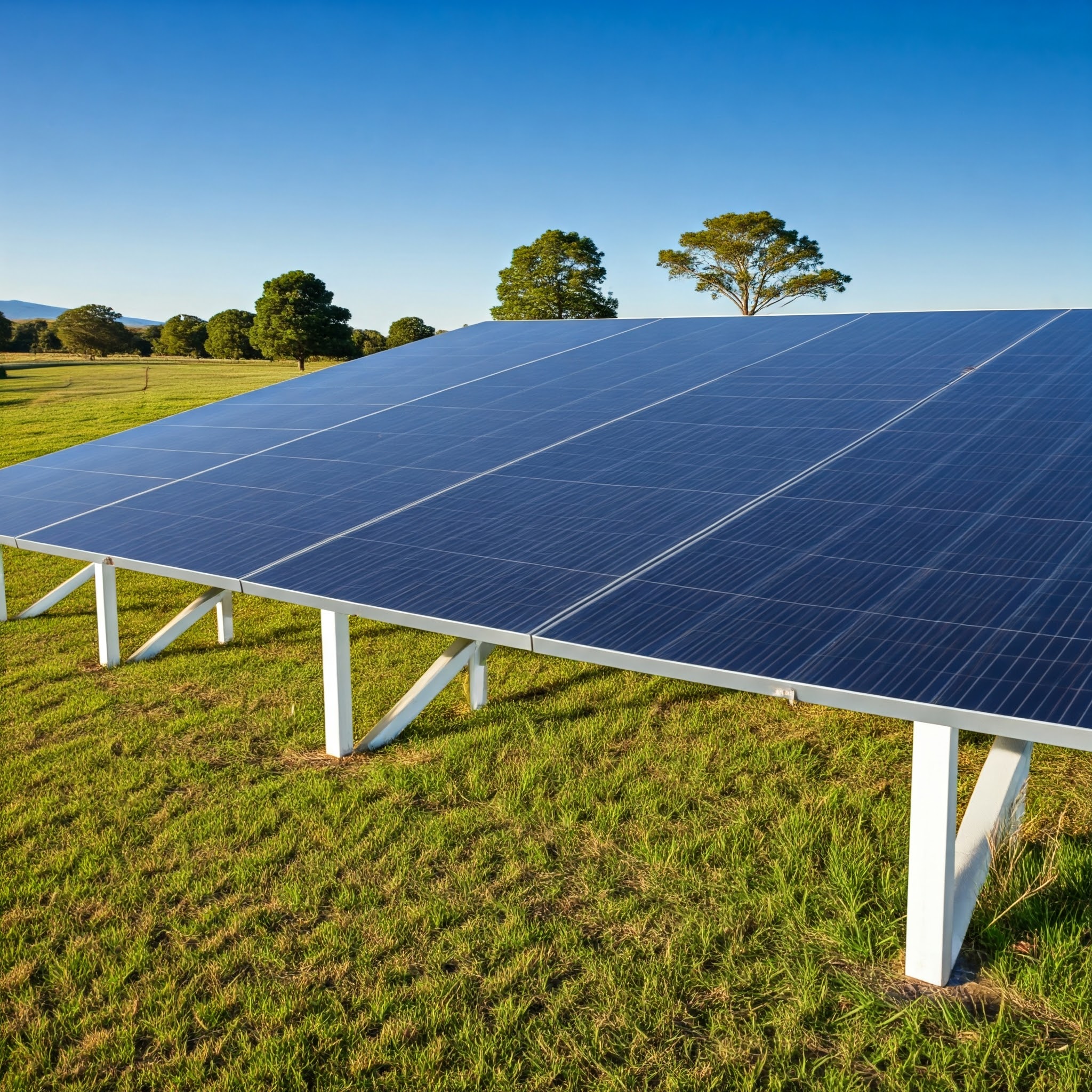The numbers are shocking – electricity prices have jumped 70% in just ten years. Most homeowners are taking a hard look at their energy bills these days.
The good news? You can cut your electricity costs by up to 80% with the right solar batteries. These systems also keep your power running during blackouts. No wonder more homeowners are turning to solar battery storage to escape those climbing energy costs.
Picking the right solar batteries for your home might seem daunting at first. You need to evaluate different types, sizes, and technical specs to find what works best for your situation.
This piece will guide you through the essentials of solar battery selection. We’ll cover everything from the simple concepts to costs and specifications that will help you choose a system to power your home efficiently for years ahead.
Understanding Solar Battery Basics
Let’s help you understand the basics of solar battery storage systems. This piece will walk you through everything you need to know about choosing the right solar batteries for your home.
Key Terms and Concepts Explained
You’ll need to know some significant terminology first. Here are the key terms you’ll come across while learning about solar batteries:
- Battery Capacity: Measured in kilowatt-hours (kWh), this indicates how much energy a battery can store
- Depth of Discharge (DoD): The percentage of battery capacity that you can safely use, typically 80-90% for modern lithium batteries
- Round-trip Efficiency: The percentage of stored electricity that’s actually usable, generally about 80%
- Battery Cycle: One complete charge and discharge sequence
How Solar Batteries Work
Solar batteries work through a simple process. Your solar panels generate excess electricity during daylight hours, and this energy gets stored in the battery instead of going to the grid. The stored energy powers your home whenever you need more than what your solar panels produce, especially during evening peaks or cloudy weather.
Common Battery Types and Technologies
The market offers several types of solar batteries, and each has its own characteristics:
| Battery Type | Key Features | Best Use Case |
|---|---|---|
| Lithium-ion | High energy density, 10+ year lifespan | Most residential installations |
| Lithium Iron Phosphate (LFP) | Longer lifetime, deeper discharge, eco-friendly | Premium home storage |
| Lead-acid | Traditional technology, requires maintenance | Off-grid systems |
Lithium-ion batteries have become the top choice for residential solar storage because of their high energy density and reliability. LFP batteries provide even more benefits with better temperature tolerance and near-zero risk of thermal issues.
The best choice for solar panels often comes from lithium-based technologies, which are a great way to get practical home energy storage. These modern batteries can power your home for 10-12 hours with a 10kWh capacity.
Assessing Your Home’s Battery Needs
Your solar investment’s success depends on picking the right battery capacity. Let us help you find the perfect size that matches your home’s energy requirements.
Calculating Required Battery Capacity
Australian households typically use about 16kWh of electricity each day. Most homes consume about 30% of their electricity when the sun is up. You’ll need enough storage to handle the other 70% of your daily power needs.
Here’s a real-world example using a home that uses 30kWh daily:
- Calculate daytime usage: 30% = 9kWh
- Calculate evening/night usage: 70% = 21kWh
- Add 20% buffer to account for system losses
Evaluating Daily Energy Usage Patterns
You need to know your energy consumption patterns to pick the best solar batteries for your home. A reliable energy monitor helps track your actual usage. These factors deserve your attention:
| Time Period | Usage Consideration | Impact on Battery Size |
|---|---|---|
| Morning Peak | Breakfast appliances | Medium capacity need |
| Daytime | Solar generation period | Minimal storage need |
| Evening Peak | Highest consumption | Maximum capacity need |
Future-Proofing Your System
Smart planning ensures you’ll be happy with your solar battery storage system years down the road. These factors might change your future energy needs:
- Changes in family size and potential load increases
- Electric vehicle charging needs
- Home additions or new appliances
Modern battery systems let you expand as needed. The SimpliPHI battery system shows this flexibility with its 98% round-trip efficiency. Some systems allow you to add more storage capacity as your needs grow.
A good rule of thumb suggests picking a battery system about 1.5 times your current solar panel system size in kilowatts. An 8kW solar system would work best with a 12kWh battery storage system.
Critical Battery Specifications
Selecting the best solar batteries for your home requires a solid grasp of technical specifications. Let’s look at the key metrics that show how well a battery performs and how long it lasts.
Power Output and Capacity Ratings
Solar battery capacity comes down to two measurements: power (kW) and energy (kWh). Tesla’s Powerwall 2 shows this well with its 5kW continuous output capacity and 13.2kWh storage capacity. LG Chem’s RESU10 provides 8.8kWh storage and delivers 3kW continuous power output.
| Specification | What It Measures | Why It Matters |
|---|---|---|
| Power (kW) | Instant energy delivery | Determines appliance support |
| Energy (kWh) | Total storage capacity | Defines runtime duration |
| Round-trip Efficiency | Energy conversion rate | Affects overall performance |
Depth of Discharge and Efficiency
Depth of Discharge (DoD) plays a vital role in your battery’s lifespan. Modern lithium-ion batteries work well with 80-90% DoD. These batteries can safely use up to 85% of their capacity, unlike traditional lead-acid batteries that should stay above 50% charge.
Your battery’s cycle life changes based on DoD levels:
- Higher DoD (80%) = approximately 3,000 cycles
- Lower DoD (20%) = up to 10,000 cycles
Temperature Tolerance and Installation Requirements
Your solar battery storage system needs proper temperature management. The right installation location improves both efficiency and safety. Lithium-ion batteries work best between 5°C and 20°C.
Battery installation must follow strict safety standards. You can’t install batteries:
- Within 600mm horizontally of windows or vents
- In evacuation routes or passageways
- Near heat sources or in direct sunlight
Temperature-controlled environments give you the best performance. Tesla’s Powerwall 2 comes with built-in heating and cooling features that maintain ideal operating temperatures. This smart feature helps your battery last longer and work better.
Comparing Battery Costs and Value
Understanding the complete cost picture helps you make smart decisions about solar battery storage. Let’s break down the financial aspects you need to think about.
Original Purchase and Installation Costs
The upfront cost of the best solar batteries for home use changes based on capacity and brand. Residential battery systems cost between AUD 18,347 and AUD 30,579. A high-quality battery system costs about AUD 1,528 per kWh of capacity installed.
These factors influence the total installation cost:
| Component | Typical Cost Range | Factors Affecting Cost |
|---|---|---|
| Battery Only | AUD 6,192 – 13,944 | Capacity, Brand |
| Installation | AUD 1,528 – 4,586 | Location, Complexity |
| Inverter/Charger | AUD 1,528 – 4,586 [193] | System Compatibility |
Long-term Maintenance Expenses
The long-term value of your investment depends on maintenance costs and system longevity. Modern solar batteries come with warranties ranging from 10 to 15 years. The actual lifespan varies based on how you use the system.
You should plan for these ongoing costs:
- Regular system checks and maintenance
- Potential inverter replacement after 10-12 years
- Battery replacement at the end of warranty period
Available Rebates and Incentives
Government initiatives help reduce your original investment. The NSW Government gives rebates between AUD 2,446 and AUD 4,281 to eligible homes. These incentives make best solar batteries available to more people:
- Victoria: Interest-free battery loans up to AUD 13,455
- ACT: Interest-free loans up to AUD 22,934
- Northern Territory: Grants for battery and inverter installation
- NSW: Additional VPP incentive of AUD 382 to AUD 611, claimable twice over six years
Feed-in tariffs (FIT) affect your overall return on investment. Batteries become a better economic choice as FITs decrease.
Getting multiple quotes from accredited installers gives you the best value. Your payback period ranges from 5 to 10 years, based on your energy usage patterns and available incentives.
Making the Final Decision
Choosing the right solar battery storage system needs you to think over several significant factors. Let’s get into the elements that will help you pick the perfect system for your home.
Warranty Considerations
The best solar batteries for home use come with warranty coverage that needs a closer look. You should focus beyond just the warranty period and review these vital aspects:
| Warranty Type | Typical Coverage | What to Look For |
|---|---|---|
| Product Warranty | 5-15 years | Manufacturer presence |
| Performance Warranty | 10 years | Capacity retention |
| Installation Warranty | 5 years | Workmanship guarantee |
Throughput warranties need your attention too. These guarantees will give a promise of 4,000 to 6,000 cycles at 80% discharge rate.
Brand Reliability and Support
Brand reliability and support quality come next on the list. The installer feedback shows these top-rated brands for after-sales support:
- Tesla: Leading with 51% installer confidence
- Sungrow: Securing 24% of installer recommendations
- SolarEdge: Maintaining 5% of installer trust
Whatever brand you pick, make sure to choose manufacturers who will stick around through your warranty period. Support might become tricky down the line if you skip the major brands.
Installation Requirements
Safety standards for installation have become more strict. The current guidelines demand:
- Location Restrictions:
- No installation within 600mm of windows or vents
- Away from evacuation routes and walkways
- Protected from vehicle damage
- Safety Considerations:
- Non-combustible barriers required for specific installations
- Proper ventilation systems
- Protection from external heat sources
Working with Clean Energy Council (CEC) accredited installers makes perfect sense. These experts know the ins and outs of battery installation and follow all safety rules.
The system needs an inspection after installation, especially in Victoria. Independent inspectors must check system safety before turning it on. This step takes time but your solar battery storage system will meet all safety requirements.
Your installation should include these elements to work well and keep the warranty valid:
- Proper documentation of all work performed
- Regular maintenance schedules
- Professional system configuration
Conclusion
Solar battery storage is a smart investment that helps homeowners reduce energy costs and break free from the grid. This piece covers everything from simple concepts to technical specifications that will shape your buying decision.
The best solar batteries provide remarkable benefits. You need to think over several factors carefully. Your battery capacity should match household needs, and installation requires strict compliance with safety standards. It also helps to check warranty coverage and brand reliability for long-term satisfaction.
Of course, costs matter, but rebates and incentives make these systems available to more people than ever before. A well-sized and installed battery system can reduce electricity bills and provide reliable backup power during outages.
Note that successful solar battery setup depends on proper research and partnerships with qualified professionals. Getting multiple quotes from CEC-accredited installers will ensure the best value for your investment. This approach helps you get optimal system performance and longevity, making your switch to solar storage smooth and rewarding.






